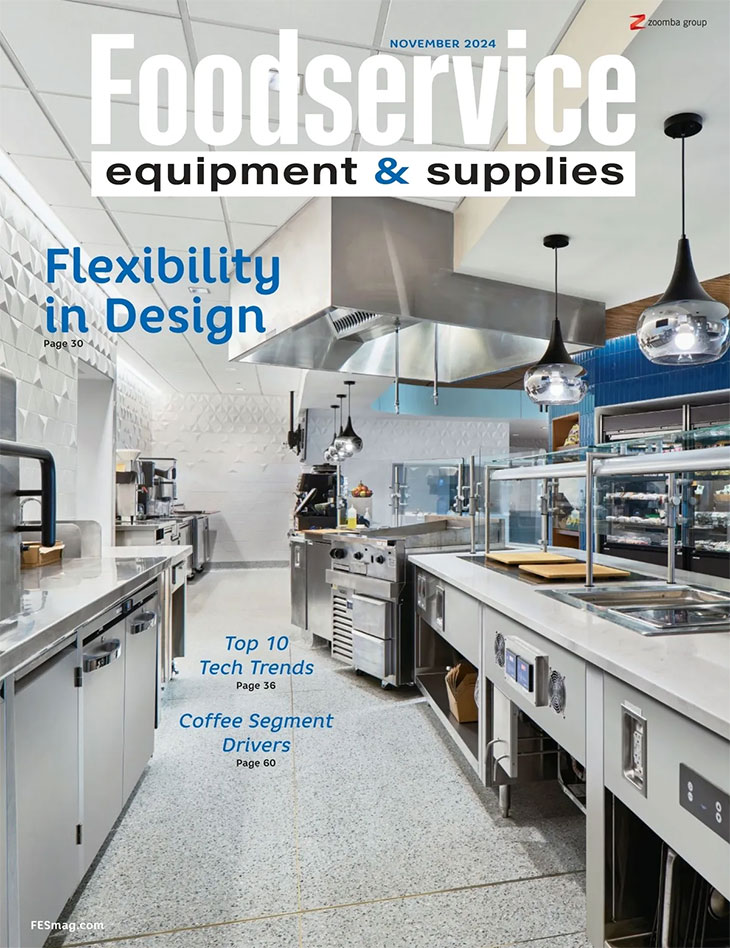Bonus content related to how sustainable businesses treat employees as well as animals while creating sustainable kitchens for the future of foodservice.
For more details on creating a sustainable kitchen, see our feature Sustainable Planet, Sustainable Business: Connecting the Food System and Commercial Kitchens of the Future.
Worker's Rights
"The social impacts surrounding food production are strongly being addressed by colleges and universities right now," John Turenne, president of foodservice consulting firm Sustainable Food Systems says. That means addressing the human rights and the animal rights implications of our food system. Part of that means doing right by your staff.
While the National Restaurant Association supports health care reform and says its members want to provide health benefits to workers, it has spoken up against federal legislation dictating what type and level of health care to provide to its workers. "That coverage must be affordable to both the employee and the employer," the Association has stressed. With the Affordable Health Care for America Act taking effect in 2014, those conversations could become moot. Still, this is a complex issue. While some restaurant companies offer insurance, benefits, sick days and vacation days, the majority do not.
But people like Nick Sarillo, owner of Nick's Pizza and Pub, believes offering decent wages and benefits to staff is worth the return on investment. In his recently released book, A Slice of the Pie, he talks about how doing so helps mitigate the high-turnover rates plaguing the restaurant industry, allowing him to not only recruit, but also retain a dedicated, high-quality staff. Plus, it's simply the decent thing to do. That, for him, is what a sustainable business means.
When you value providing decent wages and benefits to your employees, do other budgetary items like equipment and ingredient selection have to suffer? Not if you've cut costs by reducing energy and water use, reducing waste and cut excess portions to showcase only the best quality foods in a quality-not-quantity approach, says Turenne. Not if you've designed your kitchen to be as efficiently run as possible, with quality, not quantity, in terms of labor. A happier staff can mean — or lead to — a higher skilled one.
Animal Welfare
A number of animal welfare groups, including Certified Humane, American Humane Certified and Animal Welfare Approved, are working toward affecting policy and agricultural practices to better care for the animals in the food system. This might mean researching the natural behaviors of animals and passing that information along to ranchers, farmers and producers. For example, cattle like to graze, chickens like to perch and scratch, and pigs like to root so they need the space and outdoor pasture to do so.
These groups have lambasted feed lots — more officially called confined animal feeding operations (CAFOs), which generally pack in animals tightly side-by-side with little or no room to move, in an effort to encourage swift, frequent eating as a means of fattening up the animal quickly, according to Turenne. While this helps create well-marbleized steaks, pigs are often kept in indoor confinement simply because they've lost their natural fat over the years through breeding for a "lower-fat" chicken alternative.
"Livestock is a living being and because society wants to get food cheaply, we've cut corners and figured out ways to use big agribusiness to produce a lot of food for a very minimal amount of money," Turenne says.
While smaller, independent restaurants around the county have committed to the "farm-to-table" way of shopping and serving, some larger chains have started to follow that movement. McDonald's, although frequently under scrutiny for its animal welfare practices (well-documented in Eric Schlosser's Fast Food Nation), recently dropped its egg vendor because of animal cruelty claims against the producer, switching to cage-free eggs (although even "cage-free" doesn't always mean what it says).
Again, how does this affect the foodservice industry? Two words: in-house butchery.
At Nostrana in Portland, multiple-times nominated James Beard Chef/Owner Cathy Whims has butchered her own sides of beef, lamb and pork for years. She orders the proteins from smaller farmers and producers devoted to animal welfare and, in some cases, pasture-raised/grass-fed meats. At Publican in Chicago, kitchen designers installed a separate refrigerated prep table solely for use in cutting up whole sides of pork and beef. They also brought in a separate refrigerated fish table for fish ordered in whole from sustainable fisheries.
Ivy Tech Community College, Reitano says, built a separate refrigerated meat locker and fabrication "lab" equipped with reinforced ceiling hooks for storing and dry-aging sustainably raised beef. Cooking this special meat is another labor of love for many chefs and operators – wood-fired ovens, rotisseries and grills have become the cooking equipment of choice for gently infusing flavor into these meats.
More chefs and operators are also using more of the whole animal, making their own sausages, salami and other charcuterie in-house, Reitano says. Grinders, smokers, large hotel pans for curing, and of course, sharp knives, come into play for those needs.




